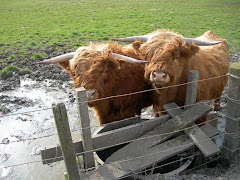Fly casting methods for beginners are difficult enough to learn. Unfortunately, it would be rare for most serious fly fishermen to want a newbie coming with them on a fly fishing expedition. Not because they are anti-social, but because the fish are! They are very sensitive to what happens in and by the water. However the best place to learn the ins and outs of fly casting methods for beginners is actually online. When reading about fly fishing for beginners, you will also be able to see pictures, drawing, and associated videos so that you will actually learn all the tricks and secrets of fly fishing.
Fly casting methods for beginners will teach you first how much line you should let out to start with, how to properly grip your rod, and how to properly balance yourself. You will also learn how to control your arm and adjust the movements of your wrist and elbow to perfect your casting technique making the cast more accurate. Of course a perfect cast means that the fly will land exactly where you want it to land, in order to lure the fish right at the fly. This will require a tremendous amount of practice, of course, but practicing for such a wonderful sport is actually rather fun.
The fly line is coated in a film that may be damaged if you are casting on concrete or gravel when you are practising so I recommend you use a cheap line for this. Or if you want to use good line, practice on a body of water, or on grass. When practising I recommend you tie some cotton wool on the end of the line as it is safe and will be easy to see so you know where the fly would land when you are actually fishing. I learned how to cast this way as did many other anglers.
Learning how to cast is not a matter of strength or force but precision and timing. This is why both men and women can become experts in fly casting. Proper casting means that you understand the energy needed to cast where you desire, and that you understand exactly when to stop the rod so that the fly lands exactly where you desire it. Basic fly casting methods include short and long distance casts over the shoulder eventually moving onto more difficult ones such as the spey and roll cast.
When you are practising it is a good idea to focus on only one goal at a time. If you want distance just practise for distance at the start and if you want to improve your accuracy then just practise that then after awhile when you become good at both them practise them together. You can accomplish this by putting a marker such as a white page or pot lid 30 feet away for instance. 30 feet is considered a short cast and therefore, do also keep in mind that you will need at least 30 feet of clear space behind you as well. This means that you will also need to check for electrical, phone and other assorted cables that may be above you.
Be sure and check often behind you, as the line is going to be exerting momentum very fast, even if it has no hook on it, and it can still injure a person or animal rather badly.
Want to learn how to cast or improve your distance and accuracy? Then check out http://www.flyfishing-for-beginners.com
Article Source: http://EzineArticles.com/?expert=Chris_Slattery
Subscribe to:
Post Comments (Atom)









No comments:
Post a Comment